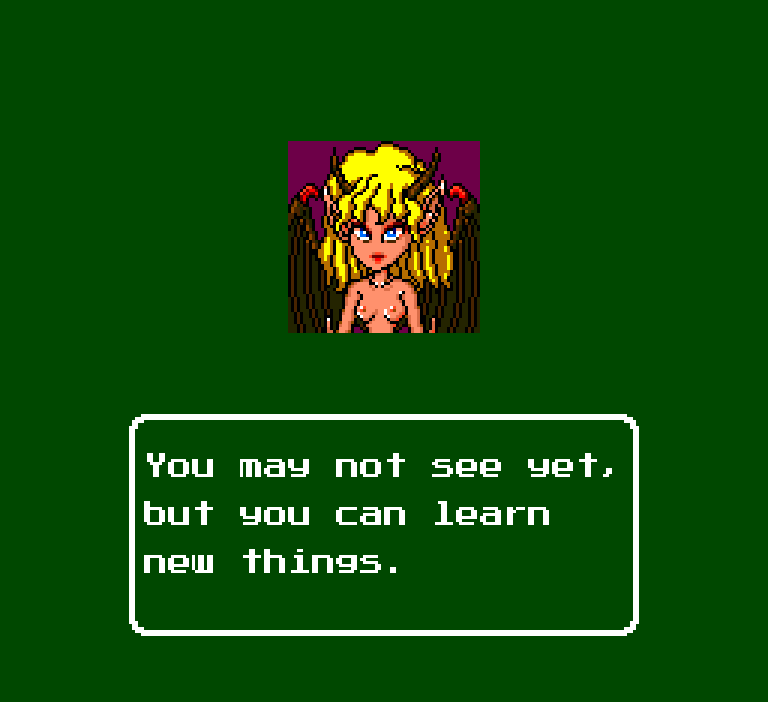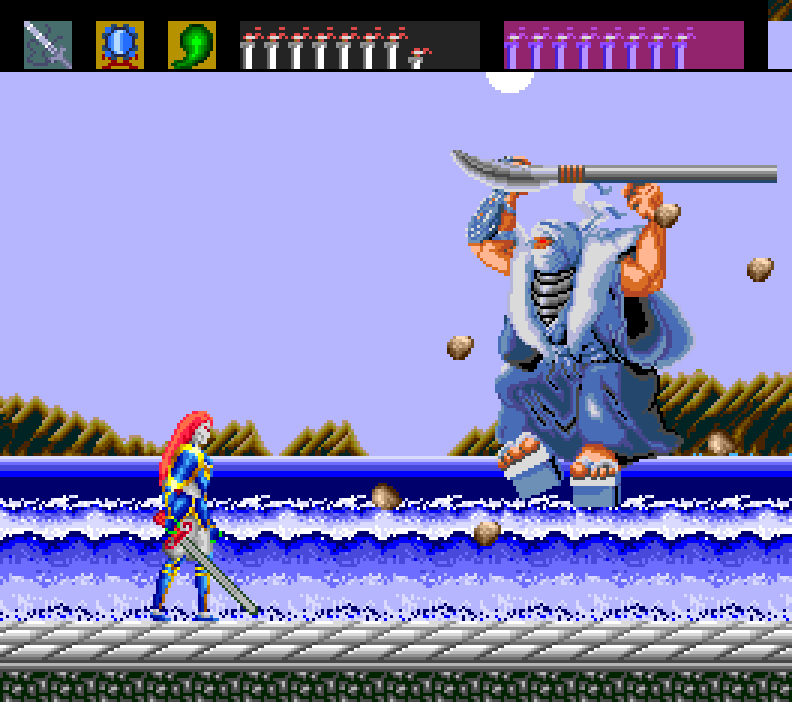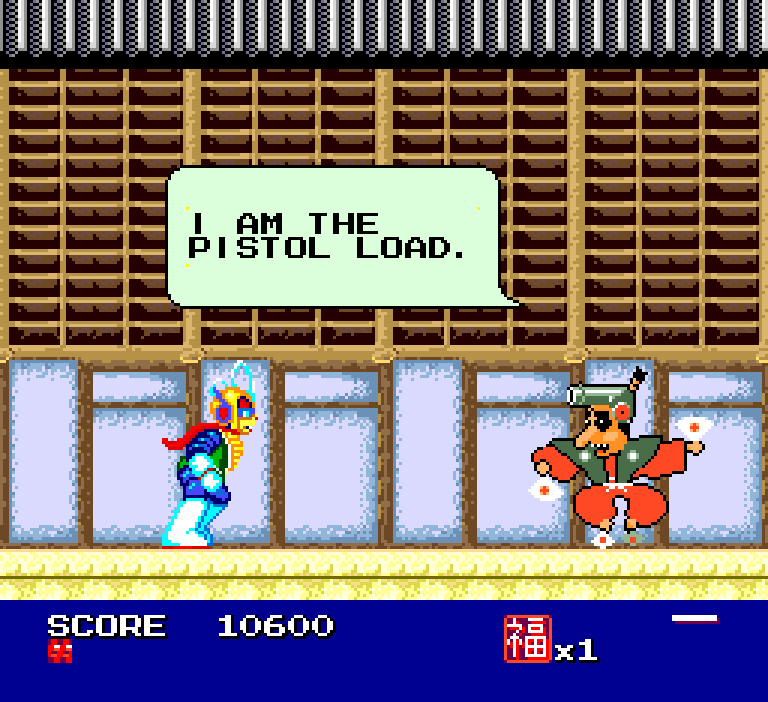I’ve spent this past week dealing with the aftermath of being bitten by the Namco bug. If I’m not playing an old Namco arcade game, I’m playing an entry in the Namco Museum series, or I’m playing Tekken 7, or I’m playing Ridge Racer 7. Turns out, at risk of sounding like I’m fangirling over a major corporation, I just really like Namco stuff. I like Namco stuff bad enough to spend actual money on the free-to-play Pac-Man 99.

 Worth it.
Worth it.
Namco also made a bunch of games for the PC-Engine, God’s Favorite Video Game Entertainment System. 25 to be precise. Thought I’d cover a few here.
Genpei Toumaden- Kan no Ni/Samurai Ghost (US Name)
I’ve written about Genpei Toumaden before. Multiple times. It’s a strange, frustrating, tedious, awesome, wonderful, amazing game that pisses me off and also kicks ass. It also got a sequel exclusive to the PC-Engine. Kan no Ni takes place entirely in “Big Mode” from the first game; large, individually animated sprites getting into sword fights with each other. There’s no more platform-based “Small Mode,” or the overhead transitional levels where you could change your progression route. There’s no more worrying about keeping your sword sharp, so you can swing and hit as many rocks and armored enemies as you want. There’s no more dealing with the underworld and Enma-Daioh if you fall down a pit. Money has a significantly reduced use. It’s all action with mild platform navigation. Kan no Ni is a much more focused, straight-forward game as a result.
The weird thing about that is that it is both a better and worse game as a result. Better in that it’s arguably a better game to play, having less bull shit to deal with and worry about before you make it to the end of the game. But it is worse in the sense that Genpei Toumaden’s personality is gone, leaving a game that looks cool and plays fairly well, but it’s not the same. The original game was fucking weird, even by the standards of skee-whoa wacky Japan, and was awesome for it. It was like playing someone’s fucked up dream. What made it, and other Namco of the era by extension, so great was that these were all games that looked simple to play, but were all weird as fuck, and had all this cool hidden shit underneath the surface; Genpei Toumaden had hidden levels where the development team would pop up and leave you a message, for example. Even when you found everything the game had to offer, explored every route and every variation of those routes, is still feels like there is more that players have yet to discover. I love that. I love games that can maintain a sense of mystery despite literally decades of having been blown wide open. Kan no Ni doesn’t have this. It is extremely cut and dry, and again, while it is a good game, it’s not the same experience. It’s too normal. That being said, it’s still worth trying out. I mean, it’s still a pretty good game to play, but not a good one to experience.
Bravoman
Bravoman is a port of an arcade game that really isn’t all that good. It still maintains that sense of Namco Weirdness, with its control set up using six-buttons like a fighting game, dedicated to how far you punch and how high you jump, and generally looking weird and having animation that is way too fluid for its own good. It plays like shit, but it’s maybe worth checking out in MAME for a couple levels.
The PC-Engine port? Whoa, that is its own animal. It’s more or less the same, in terms of level design. No, where Bravoman shines is that it looks, sounds, and plays like it’s a bootleg; as if some pirates took Galaxian hardware (a once-popular arcade board to make bootlegs from) and made an ill-executed attempt at a mascot game. Namco is and was a company with a lot of money. They have some of the best artists in the business under their employ. A number of their games from the 80s and 90s look good today, and it’s funny that Bravoman is as ugly and low-tech as it is. I don’t bring any of this up as a complaint, mind you. I love it! I love how Bravoman looks so incredibly amateurish!
I love Bravoman’s aesthetic because it gives off this chaotic energy that I love about video games. This concept of simply making shit. Does it look like shit? Yes. Does it play even worse? Oh yeah, you better believe it. Does any of this matter, as the game itself is at least an interesting mess? Fuck no! Bravoman is Kusoge to the max. It is dogshit, and it is amazing. Punch a telephone box in stage one, and it talks to you. If you keep punching your ally who delivers health-restoring rice balls, he will get mad and actually stop showing up at the end of stages. It’s the little details. It’s a damn shame Bravoman hasn’t been seen in any games since, at least outside of Namco x Capcom, a game that deserves either a re-release outside of Japan, or a fan translation that isn’t absolutely unreadable bull shit.
Tower of Druaga
Unlike the sequels and ports so far, Tower of Druaga on PC-Engine is a full fledged remake of the original arcade game. Back when the word “remake” meant something other than “95% of 2021’s release calendar.” Here’s the thing: Druaga is one of those games, like Hydlide, that is absolutely beloved in Japan, and thoroughly hated over here. And like Hydlide, I fucking love Tower of Druaga. Yes, the game is obtuse. Yes, the first two floors are an absolutely slow-ass drag. I don’t care, Tower of Druaga is amazing. It’s my favorite game in Namco Museum Volume 3, I love the Game Boy version, it’s my current “theme” in Pac-Man 99, and it’s my favorite game in this post.
Aside from updating the art, Druaga PCE, as I will call it, because I do not want to type out “Tower of Druaga PC-Engine Version” over and over, made a couple quality of life changes. The first one is that the default walking speed has been increased, meaning that you don’t have to find the hidden treasure chest in level 2 to move at a faster speed than a story being told by Grandpa Simpson. The other change is that you get a cryptic hint at the beginning of every level. For those who have not played Tower of Druaga, most levels would have a secret treasure chest. In order to actually finish the game, you needed a specific set of items that could only be acquired through these chests. To actually find said chests, you would have to do any number of things: killing certain enemies, standing still for five seconds, hitting a wall, walking in specific and unmarked parts of the level, taking damage, all sorts of things. Of course, the original game never actually told you that these chests existed, let alone how to find them. This led to communities forming in arcades, as players would try to find the solution to any given level, and share these secrets in notebooks and such. But obviously, because Druaga PCE is a console game pre-internet, you can’t really not be that obtuse to the player. At least not without also being a tremendous dickhead.
Much as I love the original Druaga, it is a pain to have to have notes nearby while I play, because I don’t have the capacity to remember how to find secrets in 60 fucking levels, so Druaga PCE is sometimes the better alternative. Plus it has something the other versions of the game don’t have: HARDCORE NUDITY!!

I’ve been a bit back-handed about the other two games in this post, but I am telling you right now: Play Fucking Druaga PCE. Definitely among the best Namco games on the system, and one of the better games on the system in general. It was never officially released in English, but there is a good fan translation that you can find pretty easily by clicking here.
That’s it for this one. I’ll come back to the PC-Engine again soon enough. Until then.











One response to “the pc-engine is god’s favorite console, part 3”
Druaga is an awesome game